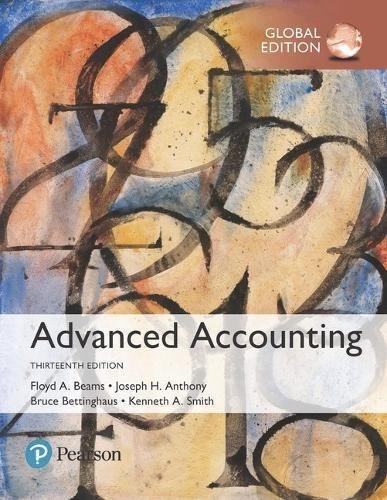P 11-6 [Based on AICPA] Separate and consolidated financial statementsentity theory The individual and consolidated balance sheets
Question:
P 11-6
[Based on AICPA] Separate and consolidated financial statements—entity theory The individual and consolidated balance sheets and income statements of P and S Companies for the current year are presented in the accompanying table. The entity theory is used.
ADDITIONAL INFORMATION 1. P Company purchased its interest in S Company several years ago.
2. P Company sells products to S Company for further processing and also sells to firms outside the affiliated entity. The inventories of S Company include an intercompany profit at both the beginning and the end of the year.
3. At the beginning of the current year, S Company purchased bonds of P Company having a maturity value of $100,000. These bonds are being held as available-for-sale securities and are, correspondingly, carried at fair value. No change in fair value has occurred over the course of the year. S Company has agreed to offer P Company the option of reacquiring the bonds at S’s cost before deciding to dispose of them on the open market.
P and S Companies’ Individual and Consolidated Balance Sheets as of the End of the Current Year
(in thousands)
P Company S Company Consolidated Assets Cash and receivables $ 35 $108 $ 97.4 Inventories 40 90 122 Plant (net) 460 140 600 Patents — — 30 Investment in S 245 — —
P bonds owned — 103 —
Total assets $780 $441 $849.4 Liabilities and Equity Current payables $ 70 $ 23 $ 53 Dividends payable 10 8 12.4 Mortgage bonds (5%) 200 50 150 Capital stock 300 200 300 Retained earnings 200 160 217 Noncontrolling interest — — 117 Total liabilities and equity $780 $441 $849.4 Individual and Consolidated Income Statements for the Current Year Sales $600 $400 $760 Cost of sales (360) (280) (403)
Gross profit 240 120 357 Operating expenses (130) (54) (189)
Operating profit 110 66 168 Interest revenue 1.8 5 1.8 Dividend revenue 11.2 — —
123 71 169.8 Interest expense (10) (3) (8)
Provision for income tax (56) (34) (90)
Nonrecurring loss — — (3)
Noncontrolling share — — (60.1)
Net income $ 57 $ 34 $ 8.7 Dividends (20) (16) (24.8)
Transfer to retained earnings $ 37 $ 18 $ (16.1)
Consolidation Theories, Push-Down Accounting, and Corporate Joint Ventures 417 REQuIRED: Answer the following questions on the basis of the preceding information.
1. Does P Company carry its investment in S Company on the cost or the equity basis? Explain the basis of your answer.
Step by Step Answer:

Advanced Accounting
ISBN: 9781292214597
13th Global Edition
Authors: Joseph H. Anthony, Bruce Bettinghaus, Floyd A. Beams, Kenneth Smith





